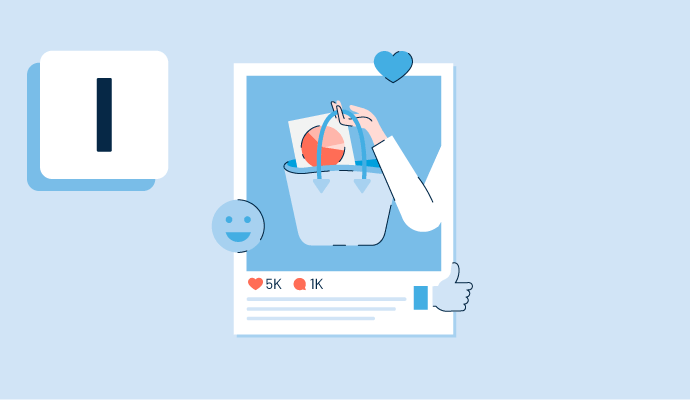What are influencer analytics?
Influencer analytics are metrics that help measure and evaluate a social media influencer’s engagement with their audience.
An influencer is part of a niche industry (like fashion, fitness, or cooking) and has a large social media presence. A career in social media involves interacting with a massive audience through various formats and types.
Influencers use social apps to create a personal brand, collaborate with companies based on their niche, or participate in multiple marketing campaigns.
Brands leverage influencer marketing platforms software and influencer analytics tools to identify which influencers and channels align best with their social messaging. The software can also help manage content generated by influencers and understand whether it is converting customers and increasing revenue.
Types of influencer analytics
Six main types of influencer marketing analytics are essential to analyze desired outcomes. These can differ based on the specific platform and metrics in place.
1. Reach
This metric has two connotations. The first is the total number of people who consume the generated content – for example, the number of times a photo or video was viewed on Instagram or Facebook. The higher the reach, the better the engagement.
Reach also reflects an influencer’s audience base. Micro-influencers can have anywhere between 10,000-50,000 followers, while macro-influencers have a larger following. Reach can also vary per influencer for different platforms.
2. Impressions
This influencer metric is the number of times specific content is displayed on a user’s social feed. The number increases even if the same person views the content more than once. Impressions can often be much higher than reach and indicate how relevant and up-to-date the influencer’s content is for their audience.
3. Engagement
Engaging with an audience is one of the most critical aspects of analyzing an influencer’s performance. Social media algorithms use engagement as the primary factor to determine whether or not to display specific content to more users. Evaluating audience engagement with an influencer’s community size is a good way to assess engagement activity across posts, stories, and live streams.
4. Growth rate
Measures the pace at which an influencer’s following increases on social media over a period. It analyses how quickly followers are gained and how consistent the growth is. Growth spikes can depend on post types and schedules based on the algorithm.
Formula
New net followers x 100 = %growth rate
Total audience
5. Traffic
Social media traffic is a valuable metric for brands and companies with influencers to track campaign results through social media efforts. Influencers often use call-to-actions (CTAs) and product plugins to drive their audience to a company’s website. This helps build brand awareness.
6. Conversions
Tracking social media conversions is a way to determine the return on investment (ROI) on influencer marketing. Conversions can be attributed to specific influencers using trackable links and tools to gauge the effectiveness of their social media activities.
Benefits of tracking influencer analytics
Influencer analytics are beneficial for every stage of social media marketing. Tracking these metrics can help brands make decisions about future campaigns and build better relationships with influencers.
- Source influencers for niche audiences: Influencer analytics are essential to finding the influencers that fit your marketing vision and brand goals. Media and influencer targeting software can provide data to help determine if their reach, content, and audience are a good fit for your campaign.
- Effective content creation: Tracking influencer analytics enables better content creation across platforms by evaluating engagement rates. Successful campaigns can be followed to understand what works better for the brand’s marketing message.
- Pick the right channel: An influencer’s success and performance can differ from platform to platform. Knowing which channel the influencer has the most significant impact on is necessary to decide what content format to produce. Identifying where the target audience is most active is important to drive traffic and potential conversions.
- Save time and money: With influencer analytics, brands can reach out to influencers with a large community and save resources that would otherwise be wasted on market research and investments in influencer marketing activities.
- Improve social listening: Social listening helps discover influencers who mention your brand without collaborating with you. This provides insights into who is advocating for your brand and opportunities to connect with them. Brand mentions are useful for targeting micro and nano influencers to grow reach and audience base for both parties.

Aayushi Sanghavi
Aayushi Sanghavi is a Campaign Coordinator at G2 for the Content and SEO teams at G2 and is exploring her interests in project management and process optimization. Previously, she has written for the Customer Service and Tech Verticals space. In her free time, she volunteers at animal shelters, dances, or attempts to learn a new language.
















